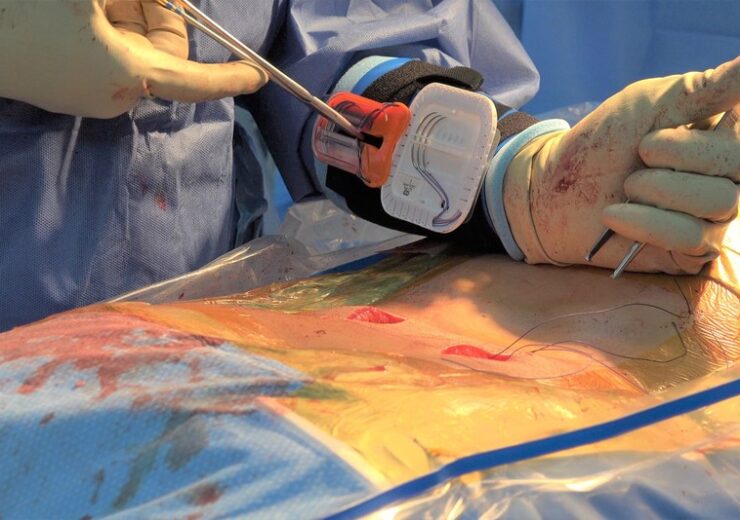Operative Armour is an engineered sharps injury prevention (ESIP) device, designed to prevent needle stick injuries (NSI) in an operating room

The surgeon using Sharp Fluidics Operative Armour system. (Credit: Sharp Fluidics, LLC.)
Sharp Fluidics, a surgical device company, has announced positive results for its surgical device Operative Armour, from a case-controlled clinical study.
The study titled ‘Efficacy of a Novel Intraoperative Engineered Sharps Injury Prevention Device: Pilot Usability and Efficacy Trial’ was conducted at The Johns Hopkins University School of Medicine.
The 100 patients enrolled in the trial were randomised to undergo either a procedure using Operative Armour or a control procedure without.
The study conducted plastics surgery procedures, including abdominal surgery, breast reconstruction, and mastopexy or breast reduction or revisions.
Sharp Fluidics president Douglas Rimer said: “In this study at Johns Hopkins it was found that Operative Armour functions effectively as an engineered Sharps Injury Prevention device by decreasing intraoperative needle passing and handling.
“The authors stated, ‘By minimizing sharps behaviors that drive needle stick injuries such as manipulation, handling, and passing of intraoperative sharps, Operative Armour demonstrates superiority over current practice in the potential to significantly decrease sharp injuries.
“We anticipate an associated decrease in needle stick injuries with use of the device. In addition to the device’s impact on needlestick risk, it may also have the potential to improve efficiency by introducing parallel processing in which two or more separate processes are conducted simultaneously rather than in series.”
Operative Armour prevents needle stick injuries in operating room
Operative Armour is an engineered sharps injury prevention (ESIP) device, designed to prevent needle stick injuries (NSI) in an operating room.
The device is designed to help surgeons, nurses, and other medical staff stay safe in the operating room. The device resulted in as many as half the needle adjustments by hand during the procedures.
The company said that the use of its wearable needle safety and workflow efficiency device Operative Armour has reduced surgical needle passes and handling during surgical closure.
The device enables the surgeon to independently close and manage the sutures, while the circulator and scrub-tech can focus on performing the final count, eliminating conflict between the two equally important activities.
The study concluded that Operative Armour effectively functions as an ESIP device by decreasing intraoperative needle passing and handling. During these procedures Operative Armour resulted in as many as half the needle adjustments by hand.
